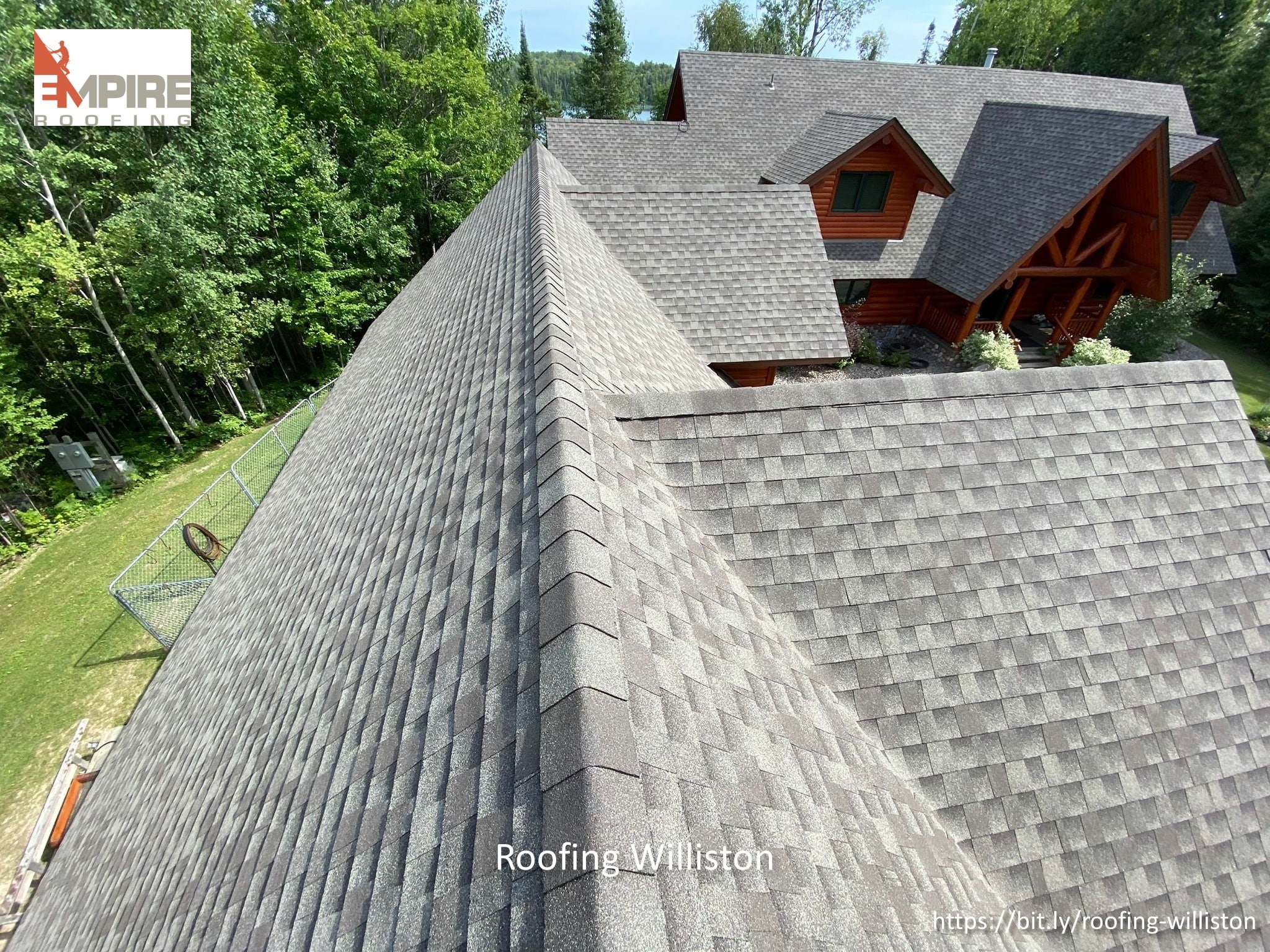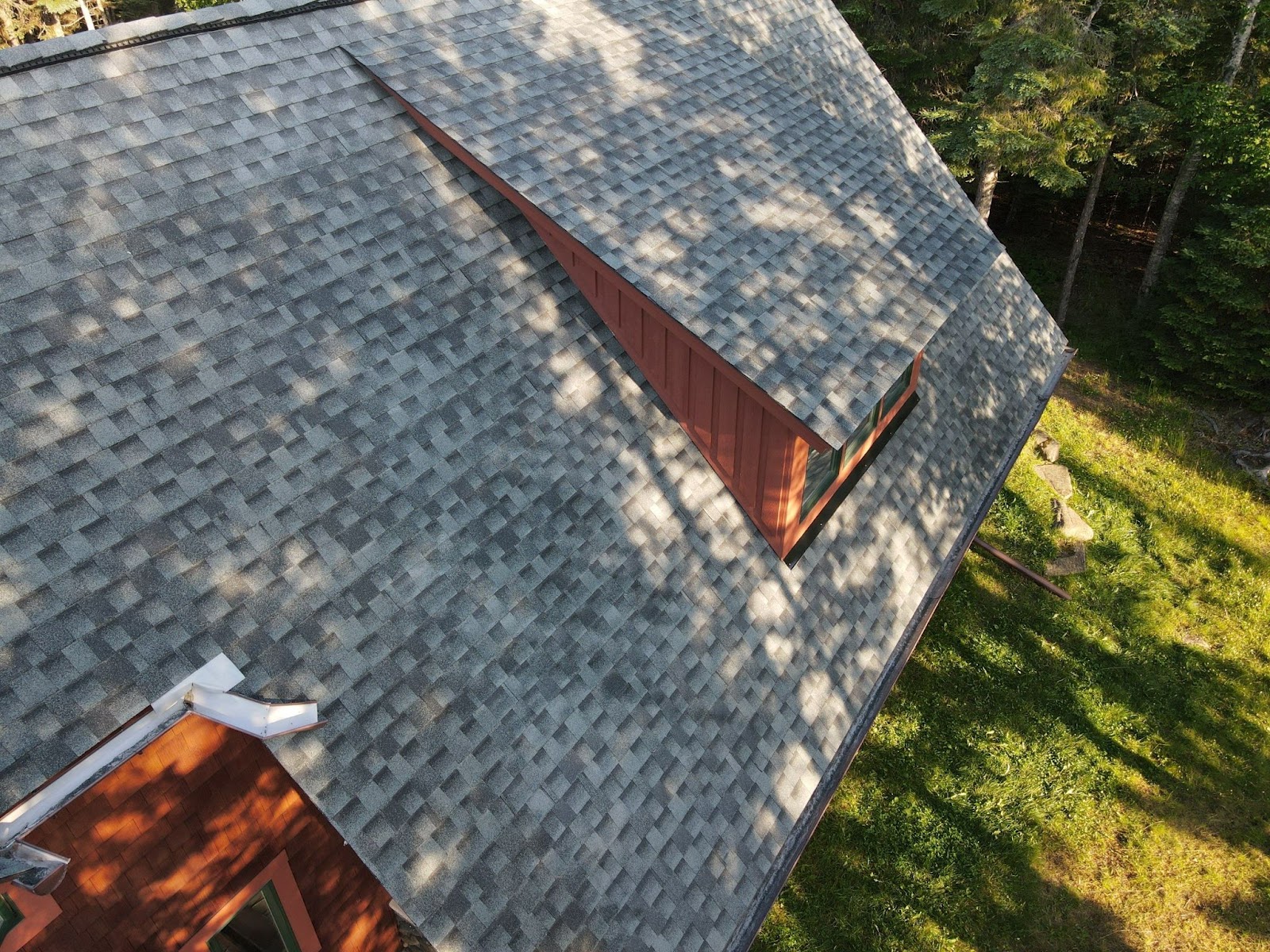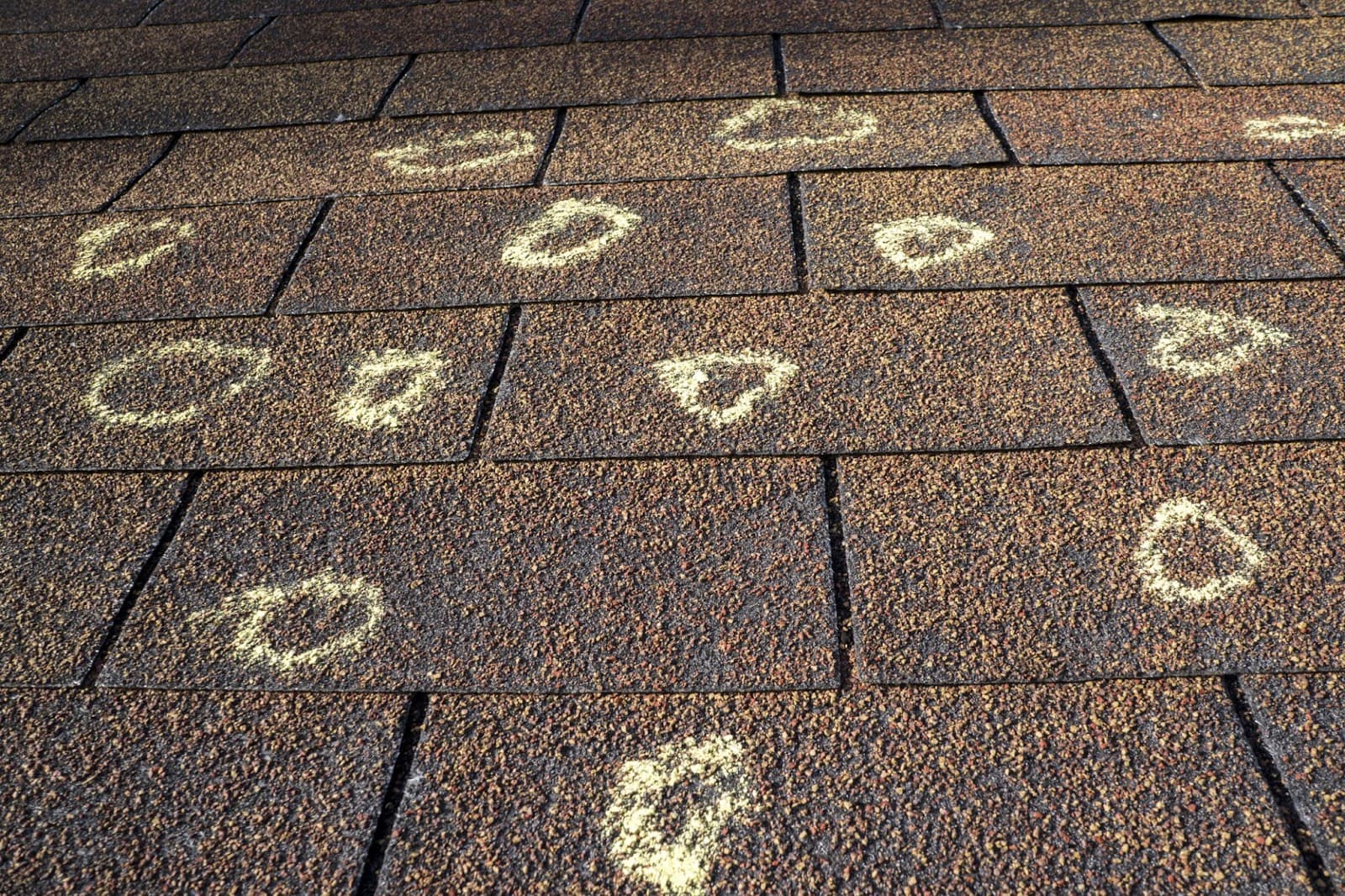Understanding and Managing Roof Storm Damage
When a storm hits, address any damage to your home’s roof immediately. Roof storm damage can quickly escalate, leading to more severe issues if not promptly and effectively managed. This guide is tailored to help homeowners, particularly in the Northland region, understand the importance of assessing roof storm damage and taking crucial immediate steps to mitigate further damage.
The integrity of your roof is paramount to keeping your home safe and secure. Storms can bring about various forms of roof damage, from shingles torn by wind to water infiltration due to hail or rain impact. Recognizing these damages early can be the difference between minor repairs and a costly full roof replacement.
Immediate Steps to Take:
- Inspect: Safely check your roof for visible signs of damage.
- Document: Take photos of any damage for your records and future insurance claims.
- Protect: Cover any breaches with a tarp to prevent water ingress until repairs can be made.
By following these steps, you can secure your home against the immediate risks posed by storm damage, setting the stage for a thorough and professional repair process.

Recognizing Signs of Roof Storm Damage
When a storm passes, it’s crucial to quickly assess your roof for any potential damage. Understanding what to look for and how to safely conduct an inspection can save you from extensive and costly repairs later on. Here’s how you can identify roof storm damage effectively.
Types of Damage
Storms can damage your roof in several ways, depending on the nature of the storm:
- Hail: Hail can create punctures or split shingles, particularly wood shingles which are less durable against such impacts.
- Wind: Strong winds can tear off shingles or loosen them, making your roof vulnerable to water ingress.
- Rain: Excessive rain can exploit any weakness in your roof, leading to leaks and water damage if not properly managed.
Common Damage Indicators
To spot signs of damage, a visual inspection is your first step. Here’s what to look for:
- Missing Shingles: This is a clear indicator of wind damage. Check for patches where the roof looks different in color or texture.
- Granule Loss: Look for areas where shingles might have lost their granular surface, often visible in gutters and downspouts after a storm.
- Water Leaks: Inside your home, check for water stains or drips in the attic or on ceilings, which suggest a breach in the roof.
Visual Inspection
- From the Ground: Use binoculars to safely inspect your roof from the ground. Look for visible signs of damage such as missing shingles or damaged flashing.
- Check the Attic: Sometimes, signs of roof damage are more apparent from inside. Check your attic for any leaks or water damage after a storm.
Safety Precautions
Safety should be your top priority during an inspection:
– Do Not Climb the Roof: Roofs can be slippery and unstable after a storm. Avoid climbing up to prevent accidents.
– Use Proper Equipment: If you must inspect areas that require you to elevate yourself, use a sturdy ladder and have someone spot you.
By understanding these indicators and types of damage, you can effectively assess whether your roof has sustained damage after a storm. Dealing with roof storm damage promptly can prevent further complications and ensure your home remains secure. If you’re unsure about the extent of damage or how to safely inspect your roof, consider contacting professionals like Empire Roofing for a thorough assessment and expert handling.

Immediate Actions Post-Storm
After a storm, taking immediate action can significantly mitigate further damage to your roof and property. Here’s what you need to do right away:
Documenting the Damage
Safety First: Before you start any inspection or documentation, ensure it’s safe. Avoid stepping on wet surfaces or using electrical devices in damp areas.
Photos: Take clear photos of all affected areas. This includes wide shots as well as close-ups of specific damages. If it’s safe to do so, take pictures from different angles to provide a comprehensive view of the damage.
Detailed Notes: Alongside photos, jot down detailed notes about the damage. Include the date and time of the storm and any immediate effects you’ve noticed (like leaks). This will be crucial for insurance claims and repair discussions.
Immediate Reporting: Contact your insurance company as soon as possible to report the damage. Quick reporting can speed up the claims process and potentially get your repairs started sooner.
Temporary Protective Measures
Tarping: If there’s a breach in your roof, covering the damaged area with a waterproof tarp is essential to prevent water from entering your home. Secure the tarp properly; it should cover the damaged area completely and extend over the roof’s peak to ensure water runs off and doesn’t pool.
Water Collection: Place buckets or other containers under leaks to catch dripping water. This helps minimize water damage to floors and belongings.
Securing Loose Items: If the storm has loosened any shingles or other materials, secure them if you can safely do so. This prevents them from becoming projectiles in case of further bad weather.
By taking these immediate actions, you can help protect your home from further damage and prepare for the repair process. Always prioritize safety and consider professional help for detailed inspections and repairs. Empire Roofing offers expert services to address roof storm damage effectively, ensuring your home’s integrity and your peace of mind.
Navigating Insurance Claims for Roof Storm Damage
Navigating insurance claims after experiencing roof storm damage can be daunting. Here’s a straightforward guide to help you through the process.
Contact Insurer
Act Fast: Contact your insurance provider as soon as you notice damage. The quicker you report the damage, the sooner they can start the claims process.
Policy Review: Understand what your policy covers. Not all damage might be covered, especially if it’s due to lack of maintenance. Review your policy to understand what damages are covered and the types of deductibles that may apply.
Understanding Policies
Deductibles: Know the difference between standard and storm-specific deductibles. Areas prone to storms might have separate deductibles for hurricane or hail damage.
Coverage Limits: Check the maximum amount your policy will pay for damage repairs. This is crucial in understanding how much you might need to pay out of pocket.
Claim Process
Documentation: Gather all documentation of the damage. Take clear photos and detailed notes. This will be essential when the insurance adjuster reviews your claim.
Filing: Submit your claim according to your insurer’s guidelines. Provide all necessary documentation and follow up regularly to check the status of your claim.
Role of Insurance Adjusters
Inspection: An insurance adjuster will inspect your home to assess the damage. They determine if the damage is covered under your policy and estimate the cost of repairs.
Approval: If the claim is approved, you will be informed about the compensation amount. Ensure this covers all necessary repairs.
Mistakes: Sometimes, adjusters might miss some damage or underestimate repair costs. If you disagree with the assessment, you can request a second inspection or appeal the decision.
Working with Roofing Contractors
Certifications: Choose certified contractors like Empire Roofing, who meet high industry standards. This ensures quality repairs.
Avoiding Scams: Be wary of contractors demanding full payment upfront or offering unusually low bids. Check their credentials and read reviews.
Quality Assurance: Ensure the contractor offers warranties for their work. This provides protection in case issues arise with the repairs later.
By understanding these aspects, you can navigate the insurance claims process more confidently and ensure your roof storm damage is repaired effectively. Working with reputable professionals like Empire Roofing can make a significant difference in the quality and reliability of roof repairs.

Repairing Roof Storm Damage
Repairing your roof after a storm is crucial to maintain the safety and integrity of your home. Here, we’ll guide you through choosing the right contractor, understanding the importance of timely repairs, and ensuring long-term solutions for roof storm damage.
Choosing the Right Contractor
Experience: Look for a contractor with extensive experience specifically in storm damage repairs. Experienced contractors understand the nuances of different damage types and can provide accurate assessments and solutions.
Local Expertise: A contractor familiar with local weather patterns and building codes will be better equipped to handle your repair needs. They can also navigate local regulations efficiently, ensuring your repairs are up to standard.
Insurance Collaboration: Choose a contractor skilled in dealing with insurance claims. They can help document the damage accurately, provide detailed repair estimates, and communicate effectively with your insurance company, simplifying the claims process.
When selecting a contractor, don’t just focus on the cost. Consider the value they bring through their expertise, reliability, and the quality of materials they use. A reputable contractor like Empire Roofing not only ensures high-quality repairs but also assists you throughout the insurance process.
Importance of Timely Repairs
Preventing Further Damage: Delaying roof repairs can lead to more extensive damage, such as water leaks that can cause structural issues and mold growth. Quick repairs prevent these problems and protect your home from future storms.
Cost Implications: Addressing damage promptly can also be cost-effective. Minor repairs can escalate into more significant, expensive problems if not handled quickly. For instance, a small leak might require simple patching now but could lead to a full roof replacement if ignored.
Warranty Considerations: Many roofing materials and repairs come with warranties that require damage to be addressed within a certain timeframe. Timely repairs ensure you remain within these terms, protecting your warranty coverage.
Long-Term Solutions
Professional Assessment: Always start with a professional inspection. This assessment will determine the extent of the damage and the necessary repairs. Professionals use tools and techniques to identify not so obvious damage ensuring your roof is restored to its optimal condition.
Choosing Materials: Select materials that are suited to your local climate and the specific demands of your roof. For instance, in hail-prone areas, impact-resistant shingles might be recommended. Quality materials ensure durability and extend the lifespan of your roof.
Sustainable Practices: Consider environmentally friendly options like reflective roofing materials that can reduce cooling costs and improve energy efficiency in your home.
By focusing on these aspects, you can ensure that your roof repairs are effective, sustainable, and beneficial in the long term. The quality of the repair work not only affects your home’s immediate safety but also its long-term value and durability. Choose a contractor like Empire Roofing, who brings expertise, quality materials, and a commitment to excellence, ensuring your roof is well-prepared to withstand whatever the weather throws at it next.
Conclusion
Why Choose Empire Roofing?
As we wrap up our guide on assessing and addressing roof storm damage, it’s crucial to review the steps you should take next and why choosing the right contractor can make all the difference. At Empire Roofing, we pride ourselves on our deep local expertise, exceptional quality commitment, and status as a GAF master elite contractor. Here’s why we stand out:
- Local Expertise: Understanding local weather patterns and common roofing issues in our area allows us to provide tailored solutions that effectively address your specific needs. Our knowledge of local building codes and materials ensures that every repair meets the highest standards of safety and quality.
- GAF Master Elite Contractor: This prestigious certification is awarded to less than 2% of roofing contractors nationwide. It signifies our superior craftsmanship, ongoing professional training, and a proven reputation. When you choose us, you’re opting for some of the best in the business.
- Commitment to Quality: We use only the highest quality materials and our attention to detail is meticulous. Our commitment extends beyond just installing a new roof; we aim to provide a durable, beautiful, and reliable roofing system that protects your home for years to come.
Next Steps:
- Review Your Roof’s Condition: If you suspect that your roof has been damaged by a storm, don’t delay. Early intervention can prevent more severe issues and costly repairs down the line.
- Contact Empire Roofing: Visit our storm damage service page and schedule an inspection. We offer a detailed assessment and will guide you through the necessary steps to ensure your roof is restored to perfect condition.
- Plan for Repairs: Based on the inspection, we will discuss with you the best course of action, including dealing with insurance claims if applicable, selecting the right materials, and scheduling the repair work.
Timely and professional repairs are crucial to maintaining your home’s structural integrity and comfort. Let us help you through this process with our expert team, quality materials, and trusted service. Contact Empire Roofing today and ensure your roof is in the best hands.

